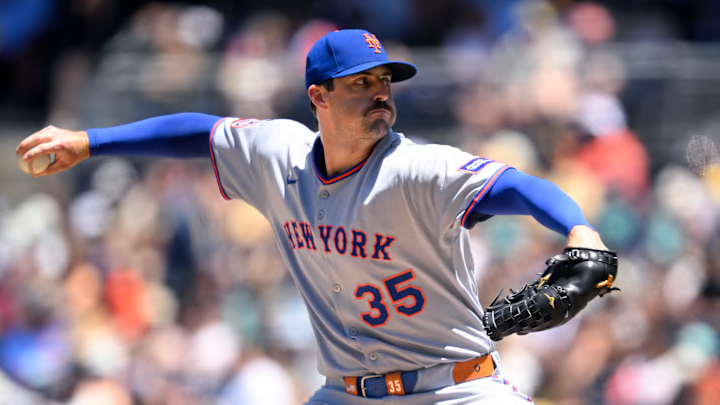The New York Mets just crushed a key deadline mission, building a bullpen that suddenly looks like it belongs in October. They didn’t slap together fixes with duct tape; they brought in real reinforcements, the kind that make you feel better about handing over a one-run lead. It was a clear, decisive answer to one of the team’s biggest concerns. But while the bullpen got stronger, one part of the ship that had been leaking for weeks finally gave out.
Imagine Daffy Duck on a boat, scrambling to plug holes with his fingers, thinking he’s holding things together, until one of those slow drips turns into a gusher behind him. While the Mets fans celebrated their bullpen upgrades during and after the game, Clay Holmes delivered another short, ineffective start. The concerns about him weren’t new, but this outing made it impossible to ignore. If the Mets don’t act fast, the next leak might sink more than just a game.
The Mets’ rotation issues, spotlighted by Clay Holmes, can’t be ignored any longer.
Holmes opened the season with real promise, a potential steady piece for the Mets’ rotation. But over his last seven starts before Wednesday, that promise has worn thin. His 4.58 ERA and .256 batting average against are warning signs, but his control has been the biggest issue. A 12.3 percent walk rate hands out too many free passes, and a 12.9 percent strikeout rate isn’t enough to make up for it. Durability is another concern. Holmes has gone beyond five innings only twice in those starts, forcing the bullpen to eat more innings than any team wants.
Then came Wednesday’s performance against the Padres, a game the Mets desperately needed to avoid a sweep. Holmes lasted just 3.2 innings, throwing 79 pitches, giving up eight hits, two walks, and four runs (two earned). It was a rough game, and one that made the rotation issues impossible to ignore. The bullpen may be solid now, but that only works if starters can hold the line, and right now, that simply isn’t happening.
If the Mets want to keep the rotation from becoming a bigger problem, they have options. After expertly reinforcing the bullpen, Stearns now needs to turn his attention to the starting staff. There are still capable arms available on the trade market, and enough flexibility to make a move if the right deal presents itself.
If Stearns is reluctant to sacrifice more prospects to patch the rotation, especially with a glaring hole still in center field, the Amazins should seriously consider promoting one of their promising arms. Nolan McLean has been a top-tier starter all season, while Brandon Sproat has put together five straight solid outings. Neither move is without risk, but both pitchers have shown enough to warrant a look. If the trade market doesn’t line up, internal help might be the cleanest fix for now.
The Mets have options and a clear deadline to act. With the bullpen now bolstered, it’s time to shore up the starting rotation before the cracks widen further. Whether Stearns pulls the trigger on a trade or leans on McLean and Sproat, the message is the same: the rotation can’t be left to bleed any longer. The Mets face a clear choice: act now to strengthen the rotation or risk falling behind in a tight playoff race.
